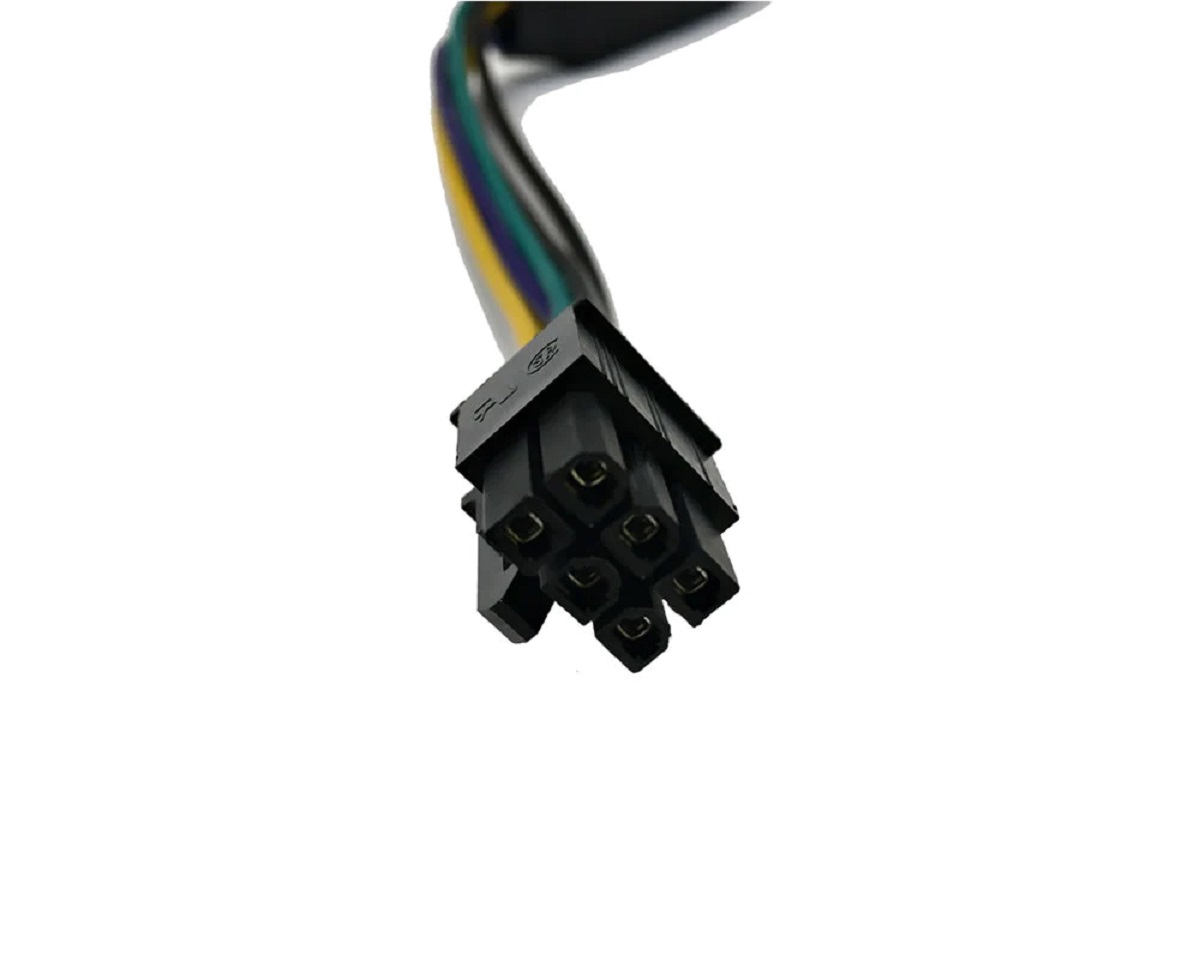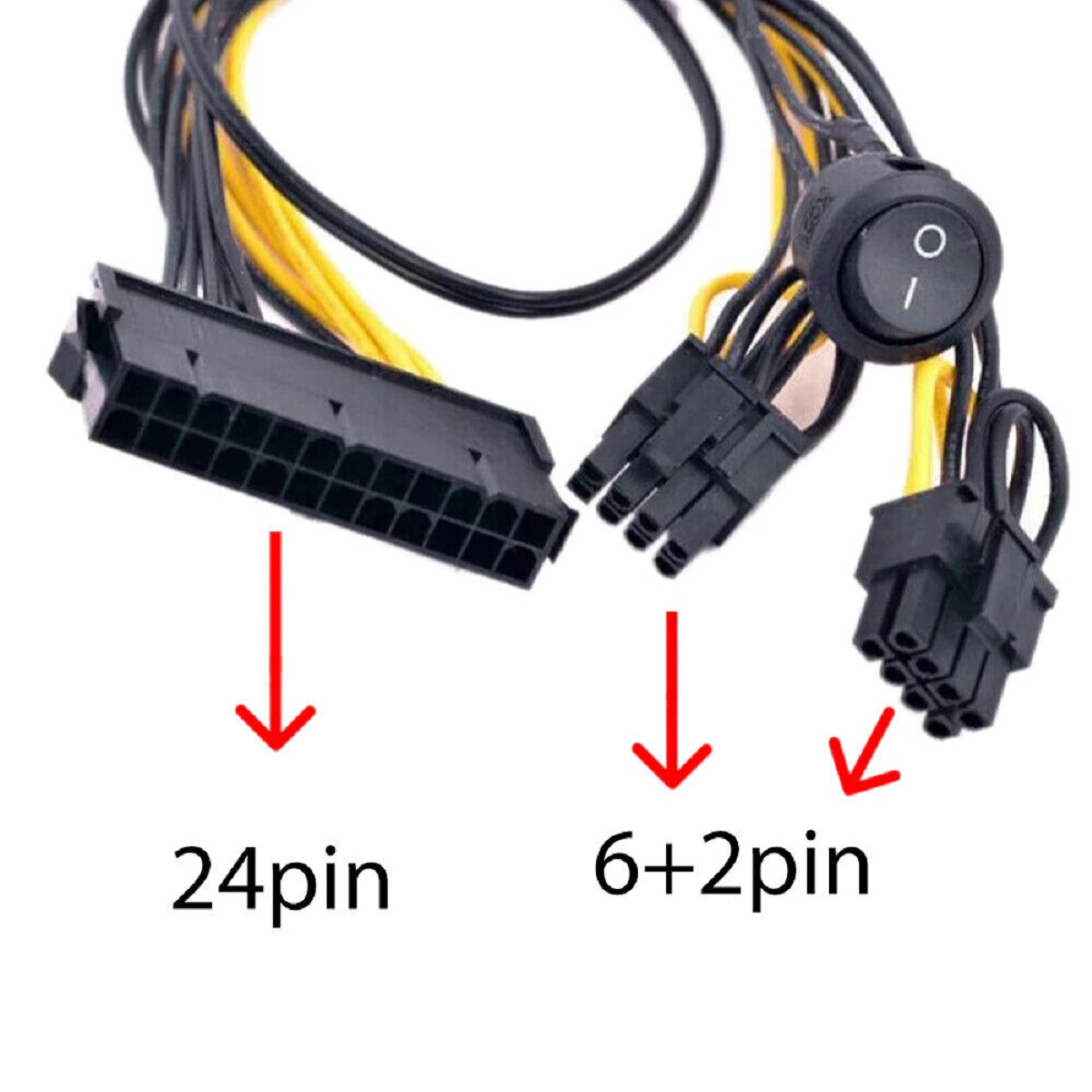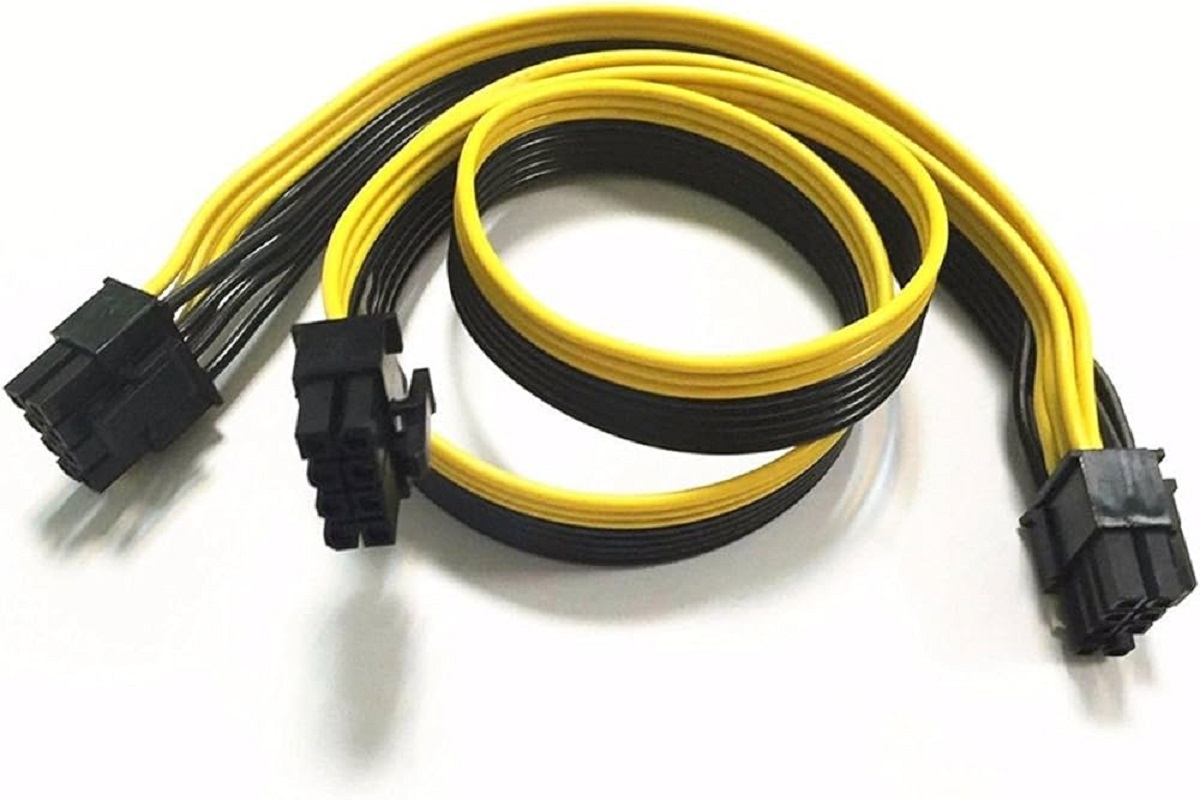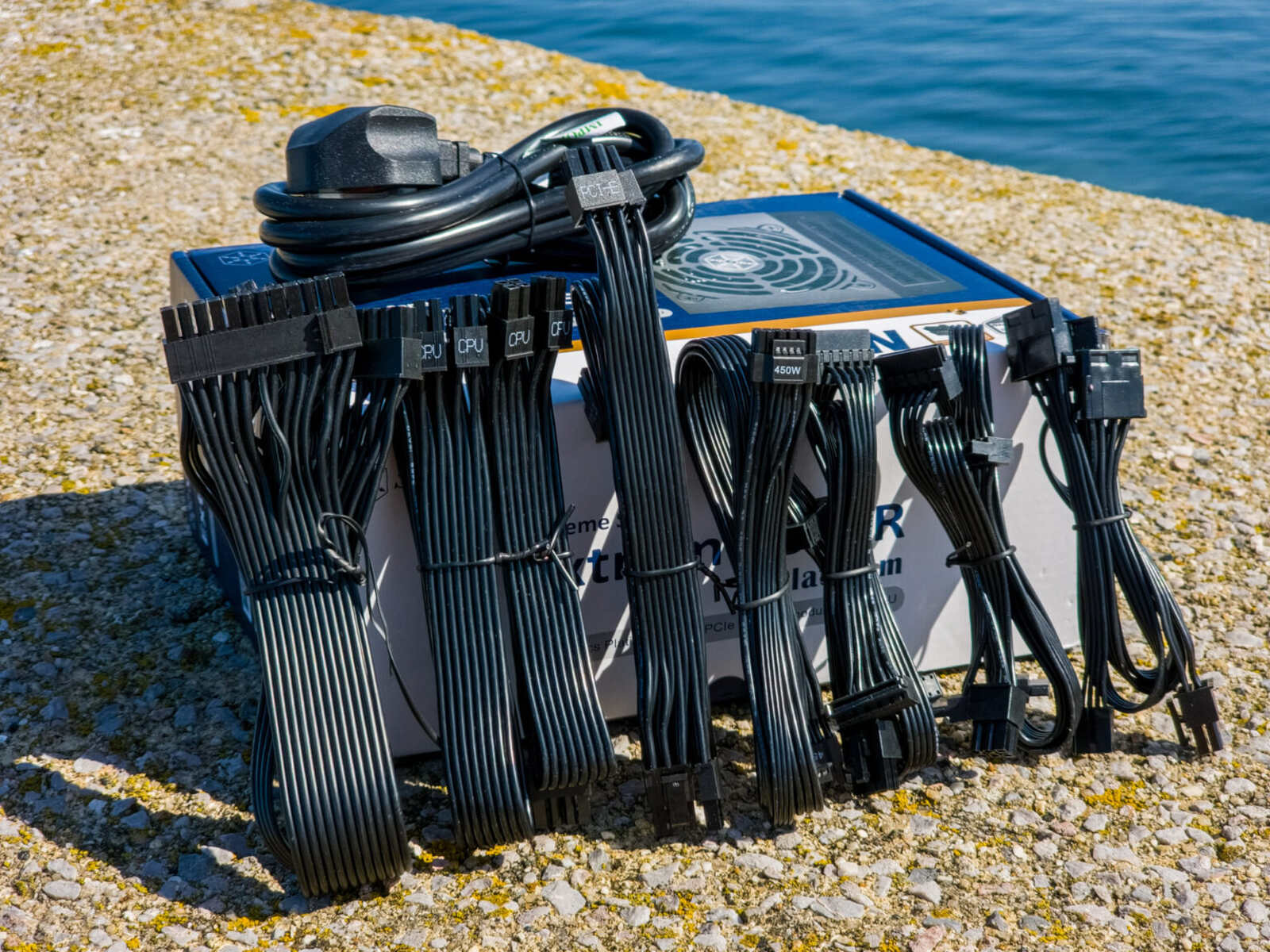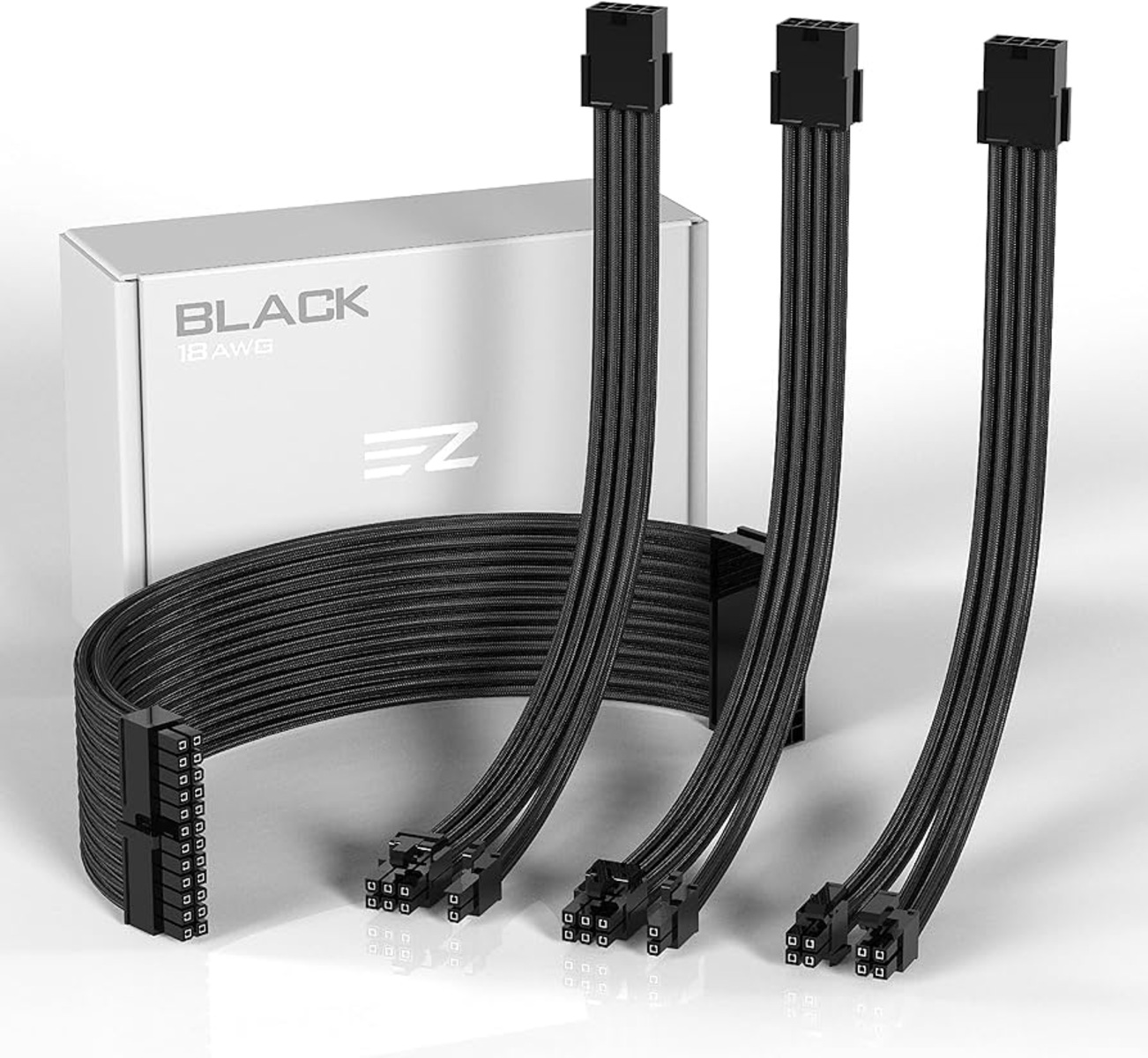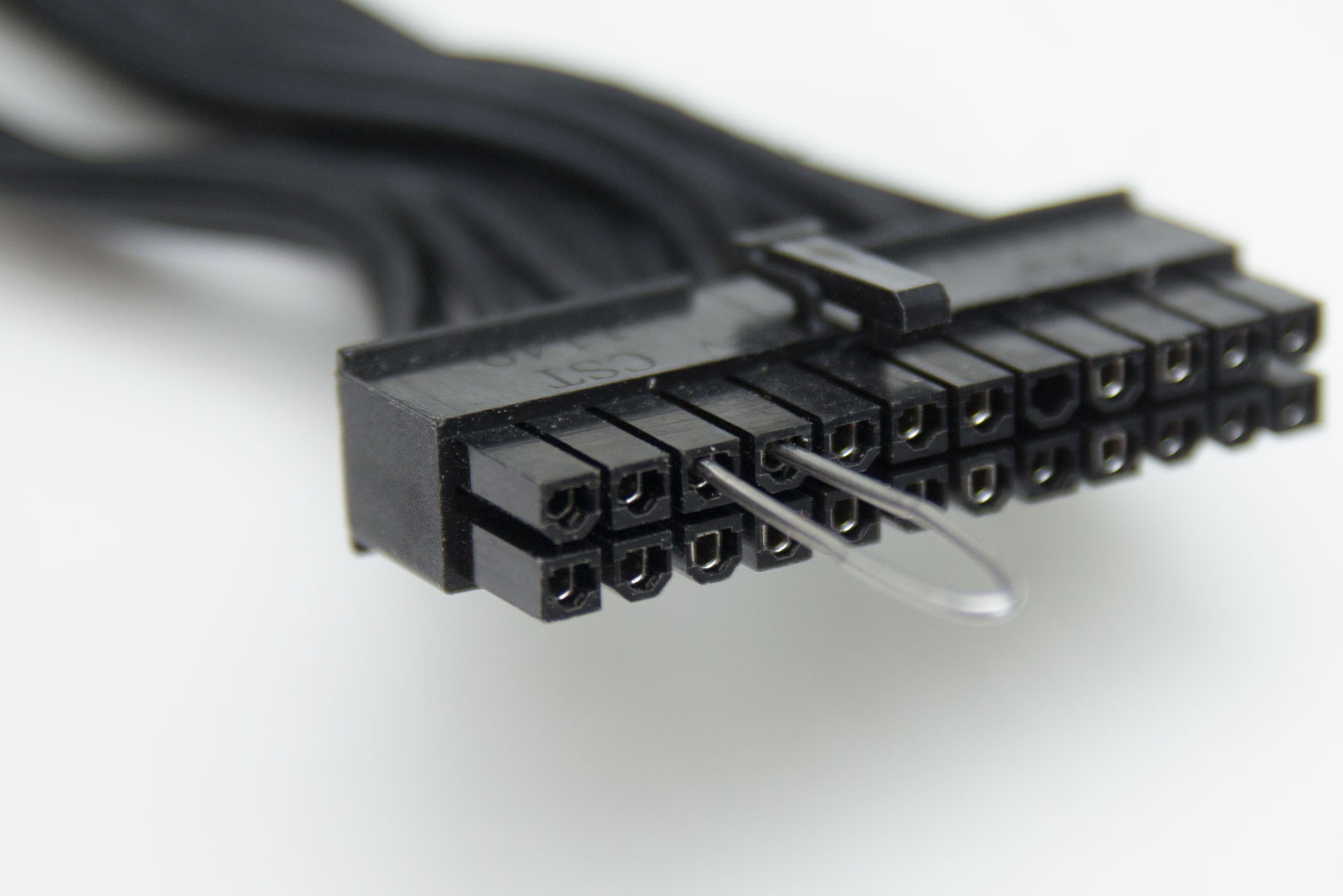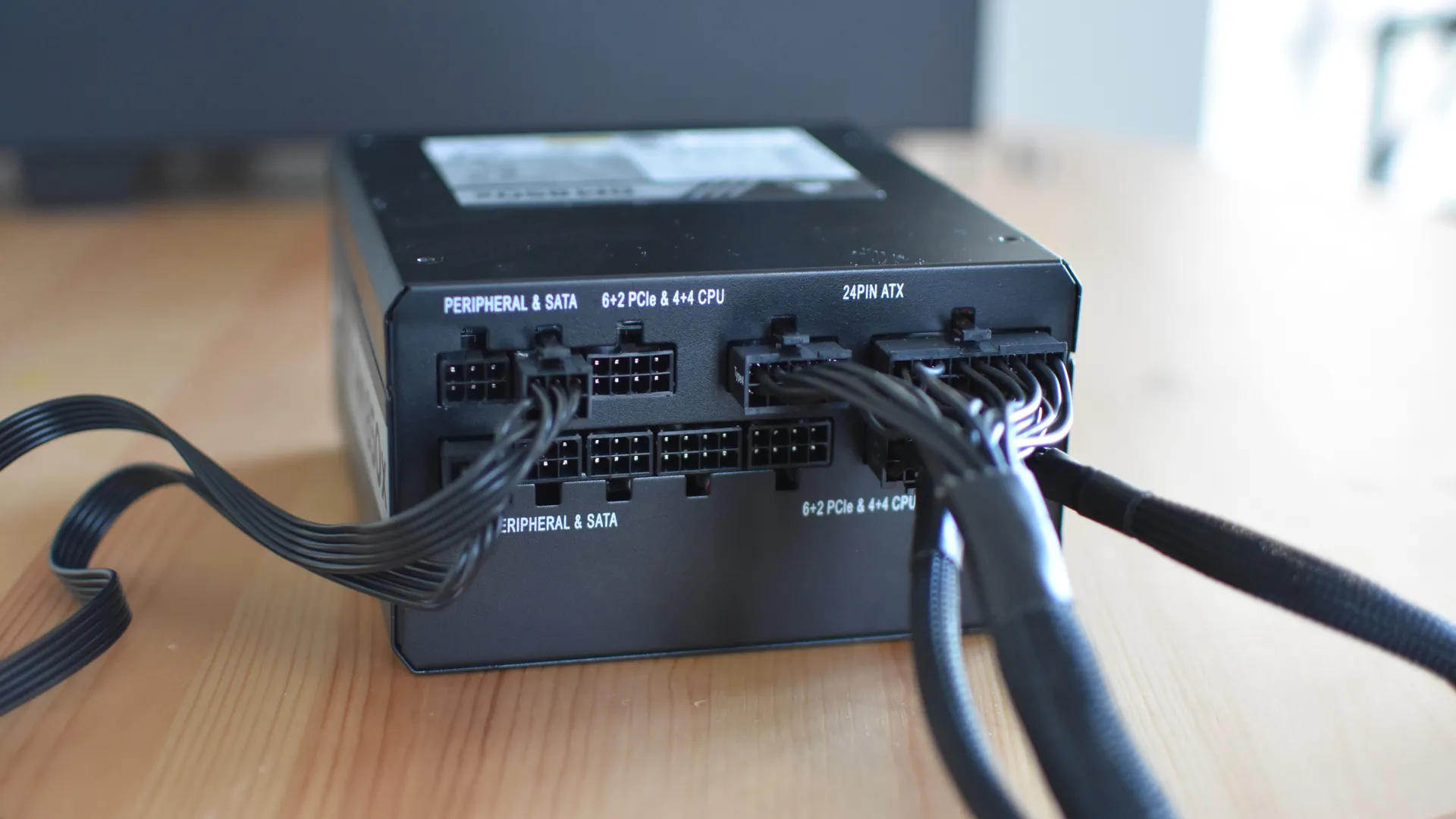Introduction
Welcome to this informative article that aims to shed light on the 6 pin connector found on power supply units (PSUs). If you’ve ever wondered what this connector is for or how it is used, you’ve come to the right place!
A power supply unit, commonly referred to as a PSU, is an essential component of any computer system. It is responsible for converting the alternating current (AC) from the wall outlet into direct current (DC) that can be used by the various components of the computer. The PSU also provides a stable and reliable power source to ensure the smooth operation of the system.
One of the features you may notice on a PSU is the presence of a 6 pin connector. This connector, with its distinctive shape and number of pins, serves a specific purpose within the computer system. In this article, we will explore the functions of the 6 pin connector, the devices that utilize it, and how to properly connect devices using this connector.
Whether you are a computer enthusiast, a casual user, or simply curious about computer hardware, understanding the 6 pin connector and its role in the overall system will enrich your knowledge and help you make informed decisions when it comes to building or upgrading your computer.
What is a PSU?
A power supply unit, commonly known as a PSU, is a crucial component in any electronic device that requires power to function. In the context of computers, a PSU is responsible for converting the alternating current (AC) from the power outlet into direct current (DC) that the computer components can utilize.
Think of the PSU as the heart of the computer, providing the necessary power to keep everything running smoothly. It supplies power to the motherboard, processor, storage devices, graphics cards, and other hardware components.
PSUs come in various wattage ratings, typically ranging from 300W to 1000W or more, depending on the power requirements of the system. It’s important to choose a PSU with sufficient power output to handle the demands of your computer.
In addition to providing the required power, PSUs also incorporate safety features such as overload protection, short circuit protection, and voltage regulation to safeguard the computer components from damage caused by unexpected power fluctuations or faulty connections.
Modern PSUs often include additional features like modular cables, which allow users to connect only the cables they need, reducing cable clutter and improving airflow within the computer case.
When purchasing a PSU, it’s essential to consider factors such as efficiency, reliability, and compatibility with your computer hardware. A reliable PSU ensures stable power distribution, reducing the risk of system crashes and component failures. Additionally, an energy-efficient PSU can lower electricity consumption and save you money in the long run.
Overall, a PSU is a vital component that should not be overlooked when building or upgrading a computer system. It provides the necessary power for all hardware to function optimally and contributes to the overall stability and performance of the system.
What is a 6 pin connector?
A 6 pin connector, also known as a 6-pin power connector, is a type of electrical connector commonly found in computer hardware. It is used to provide power to various components, primarily graphics cards and other high-performance devices that require additional power beyond what the motherboard can supply.
The 6 pin connector features six pins arranged in a specific pattern within the connector housing. Each pin serves a different purpose, allowing for the transmission of both power and data signals. The connector is typically designed to provide a secure and reliable connection, ensuring that the power is delivered efficiently without interruptions.
The pins in a 6 pin connector are often labeled or color-coded for easy identification. Commonly, there are three 12V pins, two ground pins, and one sense pin. The 12V pins carry the main power supply to the connected device, while the ground pins provide the necessary grounding for the electrical circuit. The sense pin helps monitor the voltage level and ensures the proper functioning of the device.
It’s worth noting that not all 6 pin connectors are the same. There are variations in the pin configuration and power delivery capabilities. For example, some graphics cards may require an additional 8 pin or 6+2 pin connector for higher power requirements.
The 6 pin connector is commonly found on the power supply unit (PSU) and is often included as a dedicated cable or attached to a modular cable system. This modular design allows users to connect the necessary cables based on the specific power requirements of their devices, reducing cable clutter and maintaining better cable management within the computer case.
Overall, the 6 pin connector plays a crucial role in providing supplemental power to high-performance devices such as graphics cards. It ensures stable and efficient power delivery, enabling these devices to operate at their full potential without drawing excessive power from the motherboard.
Purpose of the 6 pin connector on PSU
The 6 pin connector found on the power supply unit (PSU) serves a crucial purpose in providing additional power to high-performance devices, primarily graphics cards. It acts as a supplementary power source to meet the increased power demands of these devices beyond what the motherboard can provide.
One of the main reasons for the presence of the 6 pin connector is the power requirements of modern graphics cards. As graphics processing units (GPUs) have become more advanced and power-hungry, they require a dedicated power supply to ensure their optimal performance.
The 6 pin connector on the PSU delivers the necessary power to the graphics card, which includes both the 12V power supply and the ground connection. This extra power helps to support the graphics card’s operations, including rendering high-resolution graphics, running complex calculations, and handling intense gaming or video editing tasks.
By separating the power supply for the graphics card from the rest of the system, the 6 pin connector helps to alleviate the strain on the motherboard and prevent power-related issues. This ensures a stable power delivery to the graphics card, reducing the risk of system crashes, artifacts, or inadequate performance.
Moreover, the use of the 6 pin connector allows for easier scalability and compatibility. Graphics cards with higher power requirements can utilize multiple 6 pin connectors or even include additional 8 pin or 6+2 pin connectors. This flexibility ensures that different graphics cards, regardless of their power demands, can be properly powered by the PSU.
It’s important to note that not all devices require the use of the 6 pin connector. Lower power graphics cards or other devices may rely solely on the power supplied through the motherboard’s PCIe slot. However, for high-performance devices that demand more power, such as gaming graphics cards or professional workstations, the 6 pin connector is essential to meet their power needs.
In summary, the purpose of the 6 pin connector on the PSU is to provide supplemental power to high-performance devices, particularly graphics cards. It ensures that these power-hungry components receive the necessary power for optimal operations, while also reducing the strain on the motherboard and maintaining system stability.
Types of devices that use the 6 pin connector
The 6 pin connector on the power supply unit (PSU) is primarily used to provide additional power to high-performance devices that require more power than what the motherboard can supply. While the most common device that utilizes the 6 pin connector is the graphics card, there are other devices that also make use of this connector. Let’s explore the types of devices that benefit from the 6 pin connector:
1. Graphics Cards:
Graphics cards play a crucial role in rendering images, videos, and 3D graphics on a computer. They often require significant power to handle demanding tasks such as gaming, video editing, or professional design work. The 6 pin connector allows graphics cards to draw supplemental power directly from the PSU, ensuring stable and reliable performance.
2. High-Performance Add-in Cards:
Aside from graphics cards, other high-performance add-in cards, such as specialized audio cards or certain high-powered network cards, may require additional power beyond what the motherboard can provide. These cards can utilize the 6 pin connector to ensure that they have the necessary power to operate efficiently.
3. External Storage Devices:
Certain external storage devices, like external hard drives or RAID arrays, may have their own power requirements. These devices may require the 6 pin connector to deliver the necessary power for optimal performance, particularly in cases where multiple drives are connected and need stable power delivery.
4. Sound Cards:
Some advanced sound cards designed for audio production or high-fidelity audio playback may require additional power to handle the high-quality audio processing. While not as common as graphics cards, some sound cards may utilize the 6 pin connector to meet their power demands.
5. Other Power-Hungry Devices:
There may be other power-hungry devices, depending on the specific hardware configuration. These can include devices like high-power amplifiers, specialty peripherals, or custom-built components that require additional power over and above what the motherboard can supply.
It’s important to consult the documentation or specifications of each specific device to determine if it requires a 6 pin connector or any other additional power connections. This ensures that the power supply can accommodate the needs of all the devices in the system and prevent any power-related issues.
The 6 pin connector provides a reliable solution for delivering the necessary power to various high-performance devices, ensuring they operate at their full potential without overloading the motherboard’s power capabilities.
How to identify a 6 pin connector
Identifying a 6 pin connector is relatively straightforward once you know what to look for. Here are some key characteristics to help you identify a 6 pin connector:
1. Connector Shape:
The 6 pin connector typically has a rectangular shape with rounded edges. It is designed in a way that allows for a secure and snug fit when plugged into corresponding sockets.
2. Number of Pins:
As the name suggests, a 6 pin connector will have exactly six pins inside the connector housing. These pins are arranged in a specific pattern, with three pins on each side of the connector.
3. Pin Labels or Color-coding:
In some cases, the pins on a 6 pin connector may be labeled or color-coded for ease of identification. The pins labeled as 12V are responsible for carrying the main power supply, while the ground pins provide the necessary grounding for the electrical circuit. The sense pin may also be labeled or distinguished differently from the other pins.
4. Pin Configuration:
The 6 pin connector typically consists of three 12V pins, two ground pins, and one sense pin. These pins are arranged in a specific order and orientation to ensure proper connection and power delivery. Make sure to check the pin configuration and compare it with the device’s documentation to ensure compatibility.
5. Connection Location:
On the power supply unit (PSU) itself, the 6 pin connector is often located among the various other connectors. It may be a dedicated cable that is permanently attached to the PSU or part of a modular cable system where you can connect the appropriate cables depending on your device’s requirements.
It’s important to note that the 6 pin connector is not the only power connector found on a PSU. Other connectors, such as the 24-pin motherboard connector or the 8 pin (4+4) CPU connector, are also present. However, the distinct shape, number of pins, and pin configuration of the 6 pin connector make it relatively easy to identify.
If you are unsure about the connector type or need further clarification, referring to the device’s documentation or consulting with a knowledgeable hardware resource can provide the necessary guidance.
How to connect devices using the 6 pin connector
Connecting devices using the 6 pin connector is a relatively simple process. Here are the steps to follow:
1. Identify the 6 pin connector:
First, identify the 6 pin connector on both the device you want to connect (e.g., graphics card) and the power supply unit (PSU). The 6 pin connector on the device will typically be located near the power inputs, while the connector on the PSU may be a dedicated cable or part of a modular cable system.
2. Ensure the power is off:
Before making any connections, ensure that the device and the computer are powered off and disconnected from the electrical outlet. This step is crucial to prevent any potential electrical hazards or damage to the components.
3. Connect the 6 pin connector to the device:
Take the 6 pin connector from the PSU and align it with the corresponding port on the device (e.g., graphics card). Ensure that the pins on the connector are properly aligned with the holes in the port. Gently insert the connector into the port and push until it is fully seated. You should feel a secure connection when properly inserted.
4. Connect the other end to the PSU:
If the 6 pin connector is a dedicated cable attached to the PSU, locate the corresponding port on the PSU labeled “PCIe” or “GPU.” Align the connector with the port and firmly push it in until it is fully seated. If you are using a modular cable system, attach the appropriate cable to the PSU, ensuring it is securely connected.
5. Secure the connections:
Once the 6 pin connector is properly connected to both the device and the PSU, ensure that the connection is secure. Check for any loose or wobbly connections and make any necessary adjustments to ensure a snug fit. A secure connection will help prevent accidental disconnections and ensure proper power delivery.
6. Power on the system:
After making all the necessary connections, you can proceed to power on the computer system. Ensure that the power supply is switched on, and the device you connected using the 6 pin connector will receive the necessary power to function.
Remember to consult the device’s documentation or manufacturer’s guidelines for any specific instructions or considerations when connecting devices using the 6 pin connector. Properly connecting the devices will ensure stable power delivery and optimal performance.
Potential power limitations of the 6 pin connector
While the 6 pin connector is designed to provide supplemental power to high-performance devices, it does have some power limitations that are important to consider:
1. Power Output:
The 6 pin connector is typically designed to deliver a maximum power limit of around 75 watts. This power output may be adequate for many lower to mid-range graphics cards or other devices, but it may not be sufficient for high-end or power-hungry graphics cards that require more power.
2. Power Draw Limits:
Some high-performance graphics cards or devices may exceed the power output capabilities of a single 6 pin connector. To cater to higher power requirements, these devices may utilize multiple 6 pin connectors or even additional connectors like 8 pin or 6+2 pin connectors. It’s important to carefully check the power requirements of your device to ensure that your power supply can meet the demands.
3. Compatibility:
Not all power supply units (PSUs) may have the necessary 6 pin connector or provide sufficient power output for devices that require it. It’s important to ensure that your PSU has the appropriate connectors and meets the power requirements of your device before attempting to connect them. Upgrading to a higher-wattage PSU with the necessary connectors may be required to support power-hungry devices.
4. Overloading:
Excessive power draw from devices connected through the 6 pin connector can potentially overload the PSU’s output capabilities. This can lead to unstable power supply, system crashes, or even damage to the components. Carefully consider the power draw of all devices connected to the PSU to avoid overloading the system.
5. Voltage Regulation:
Depending on the quality and design of the PSU, voltage regulation may vary. Inadequate voltage regulation can result in voltage spikes or drops, affecting the stability and performance of connected devices. Investing in a high-quality PSU with reliable voltage regulation can help address this potential issue.
Understanding the power limitations of the 6 pin connector is crucial to ensure that your devices receive adequate power and that your PSU can support their power requirements. It’s recommended to consult the documentation of your devices and PSU, and potentially seek expert advice when dealing with power-hungry or high-performance components.
Conclusion
The 6 pin connector on the power supply unit (PSU) is a crucial component that allows for the efficient and reliable powering of high-performance devices, primarily graphics cards. It provides supplemental power beyond what the motherboard can supply, ensuring optimal performance and stability.
Throughout this article, we have explored various aspects of the 6 pin connector, including its purpose, identification, and connection process. We have also discussed the types of devices that utilize the connector and the potential power limitations associated with it.
Understanding the role of the 6 pin connector is essential for anyone building or upgrading a computer system. It allows for the proper power delivery to devices that require additional power, thereby avoiding potential system crashes, performance issues, or even damage to components.
When working with the 6 pin connector, always ensure that the device and computer are powered off before making any connections. Properly align and secure the connector to ensure a reliable connection. Be mindful of the power limitations and requirements of your devices, as well as the capabilities of your PSU.
By having this knowledge, you can confidently select compatible components, establish stable power delivery, and optimize the performance of your system.
So, whether you’re a computer enthusiast, gamer, or professional, understanding the 6 pin connector on the PSU empowers you to make informed decisions, especially when it comes to high-performance devices that require the additional power it provides.
Now that you have a solid understanding of the 6 pin connector, go forth and harness the power it offers to unleash the full potential of your computer system!







